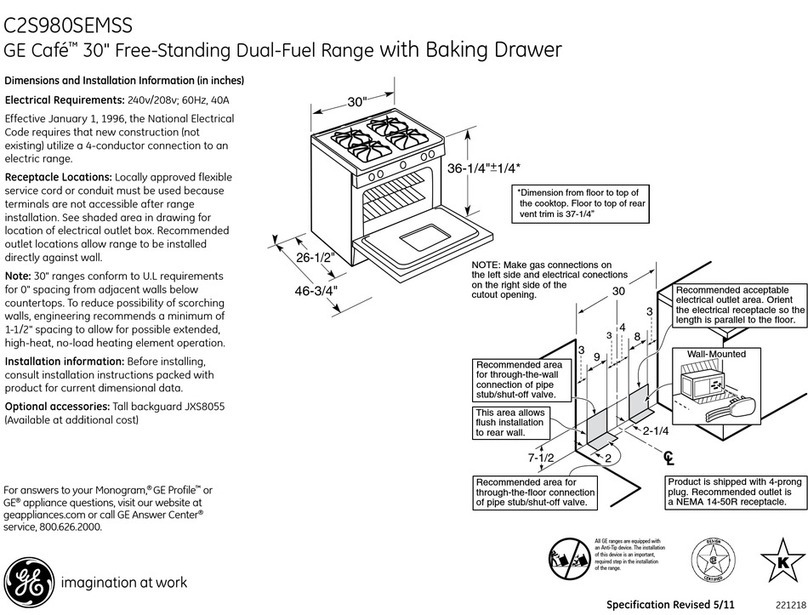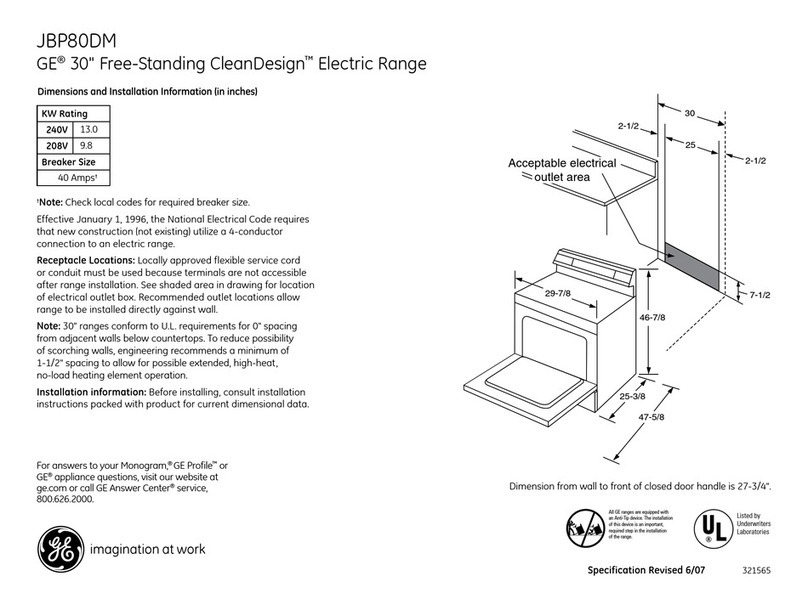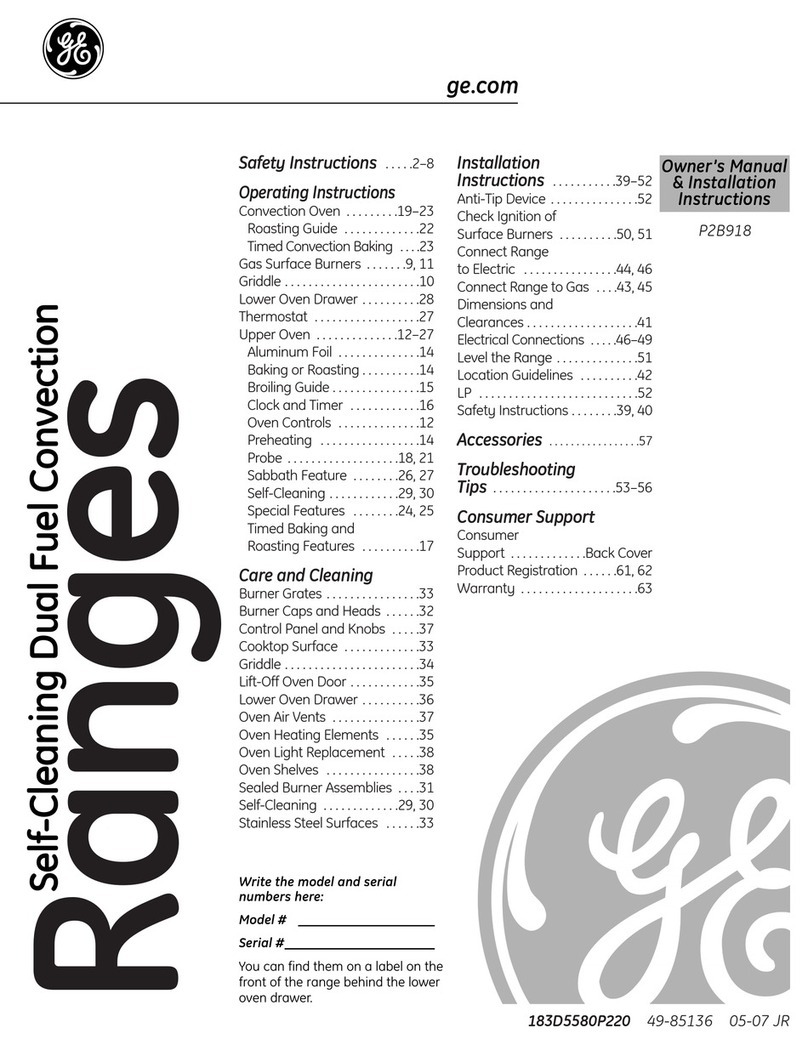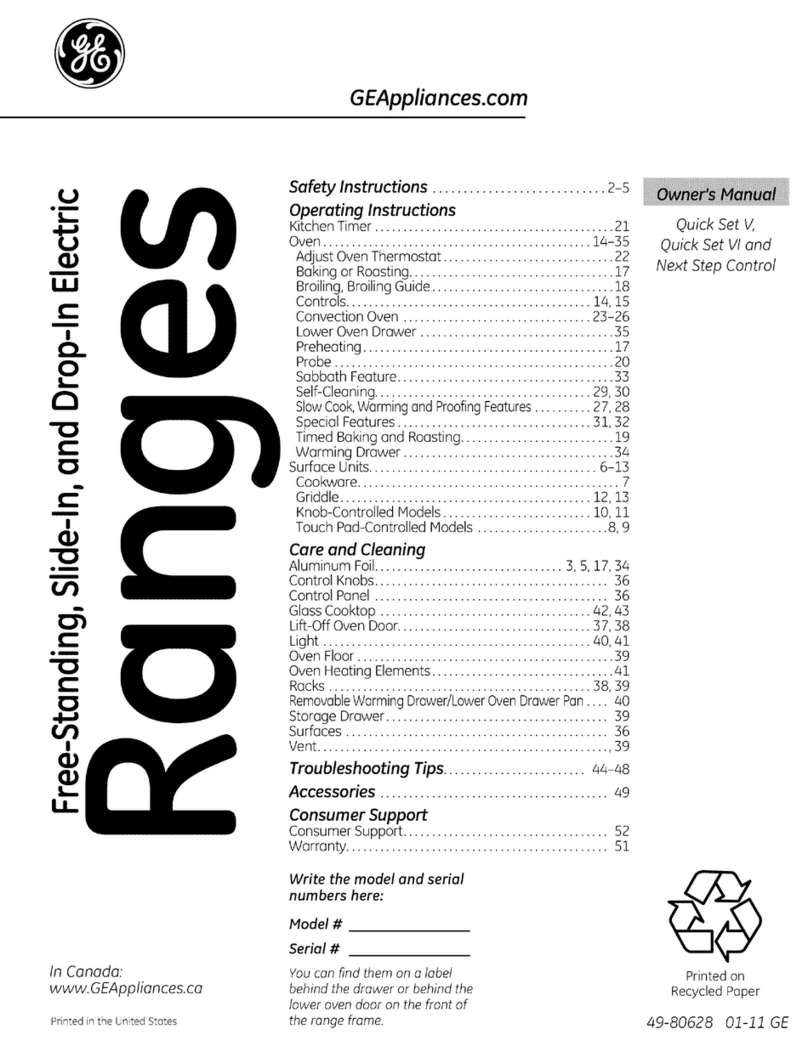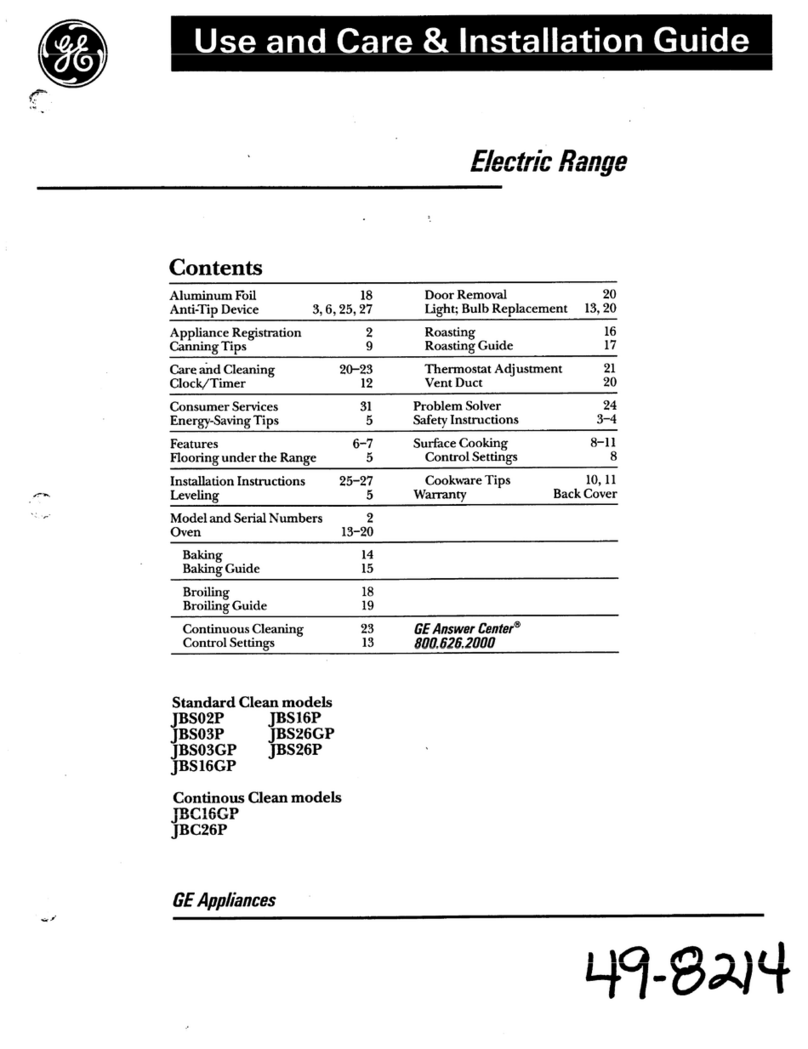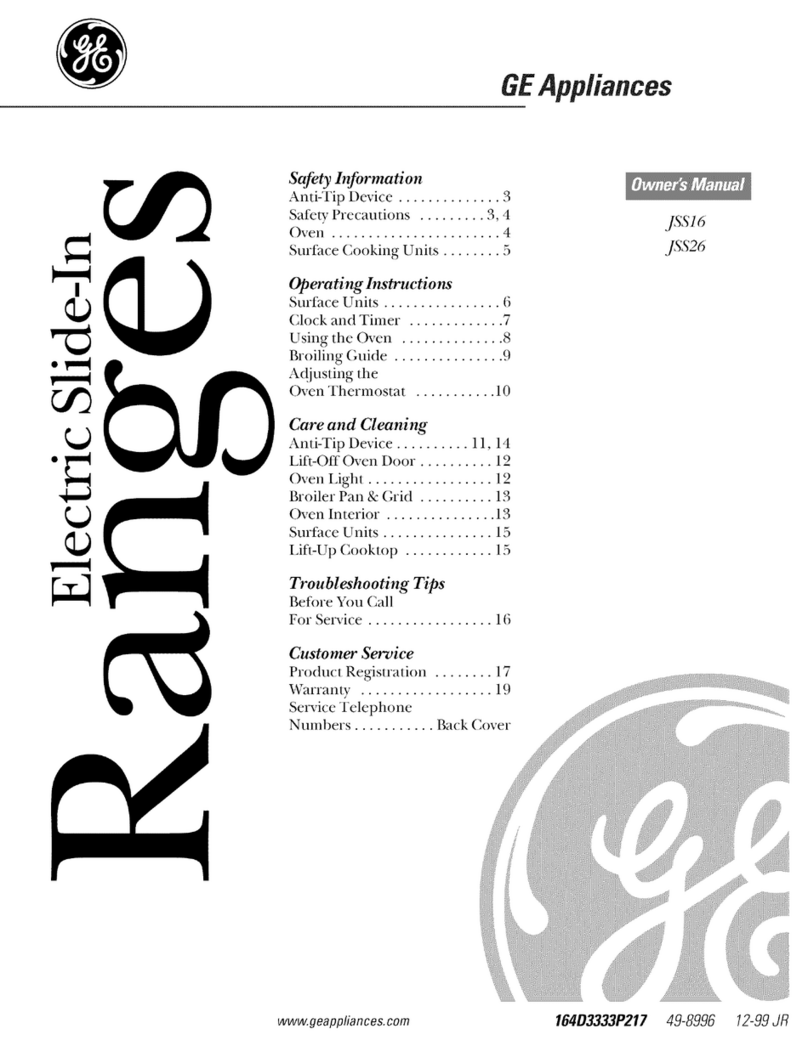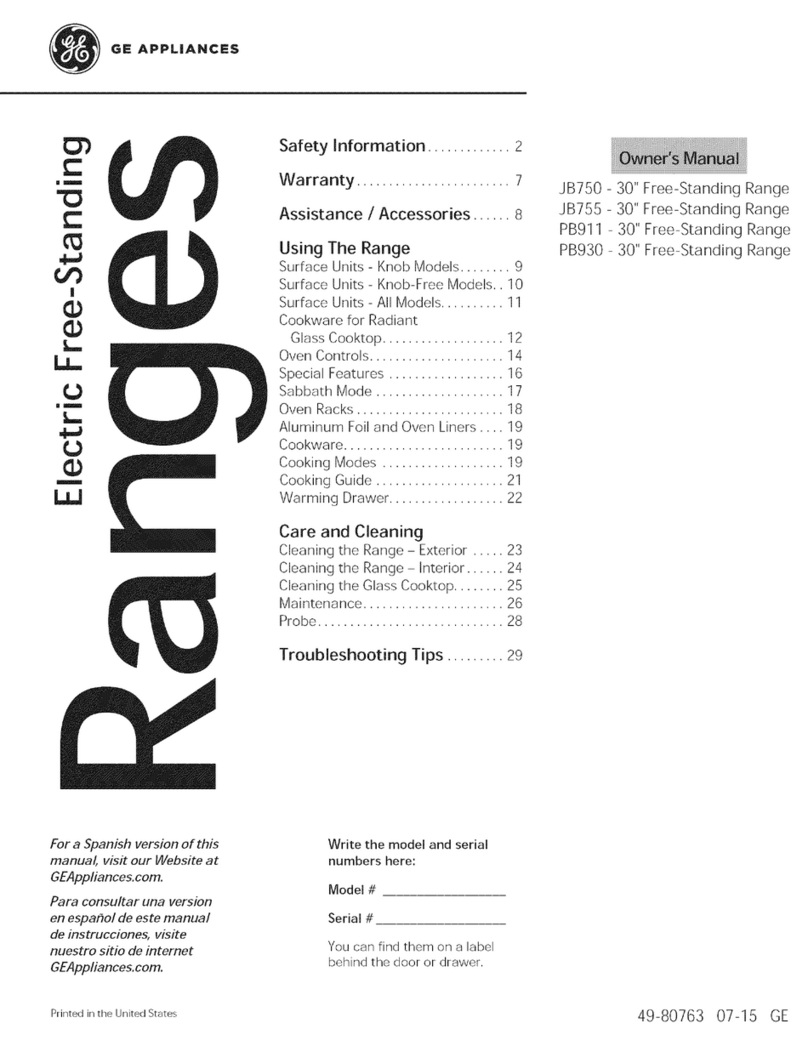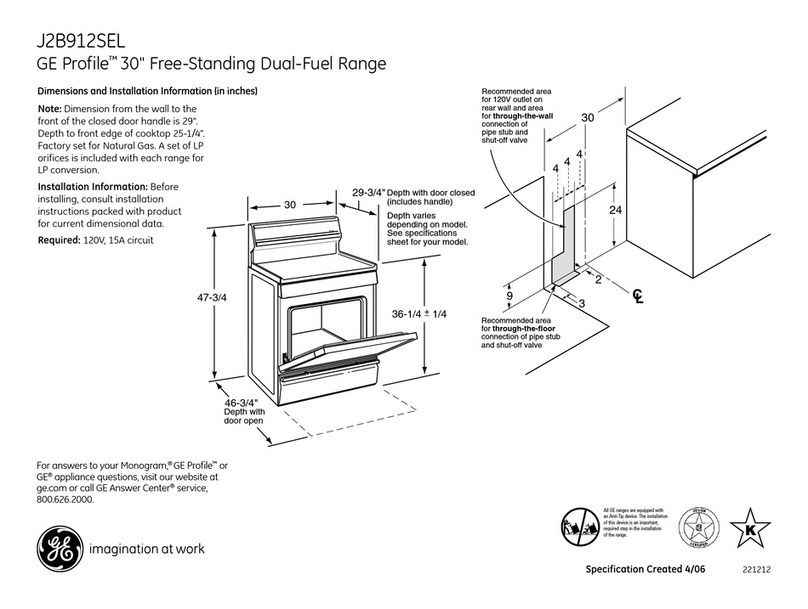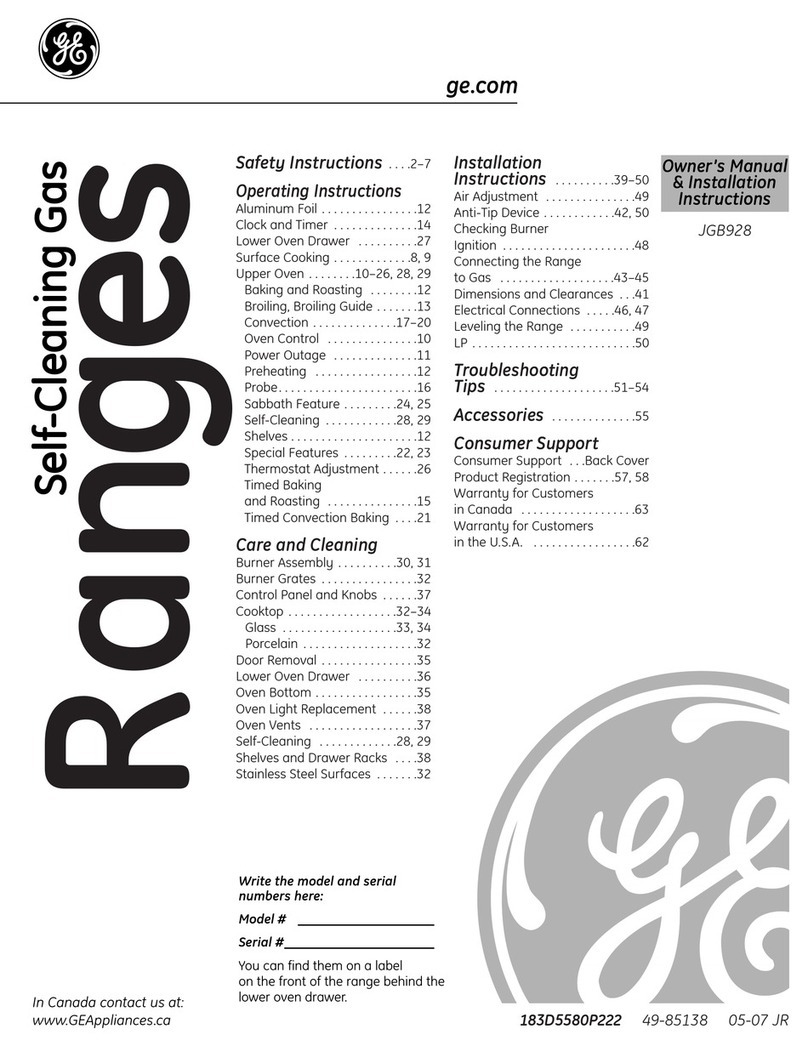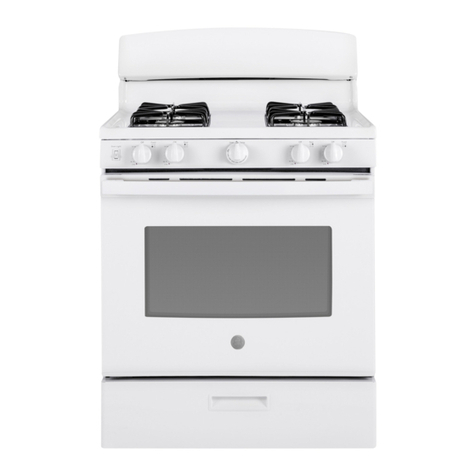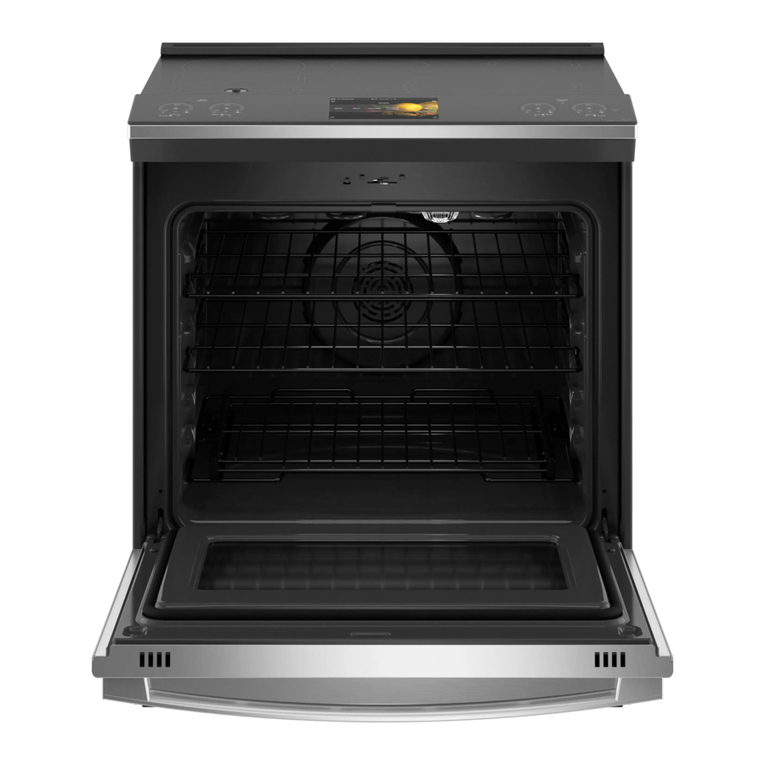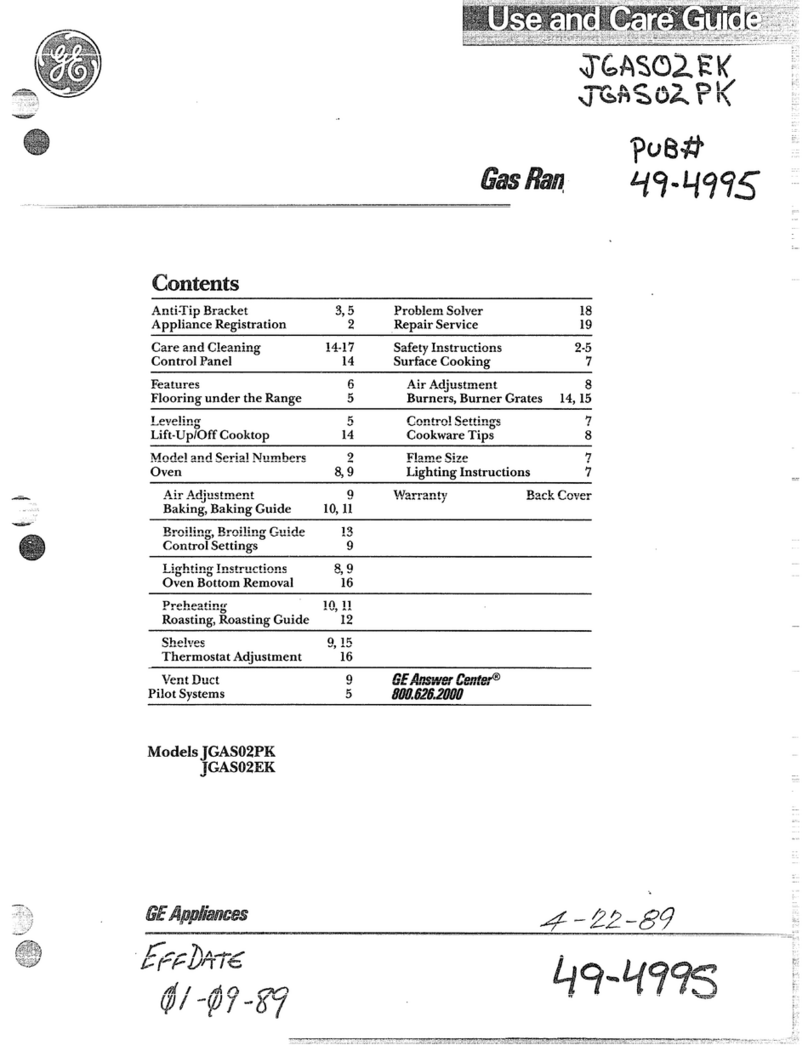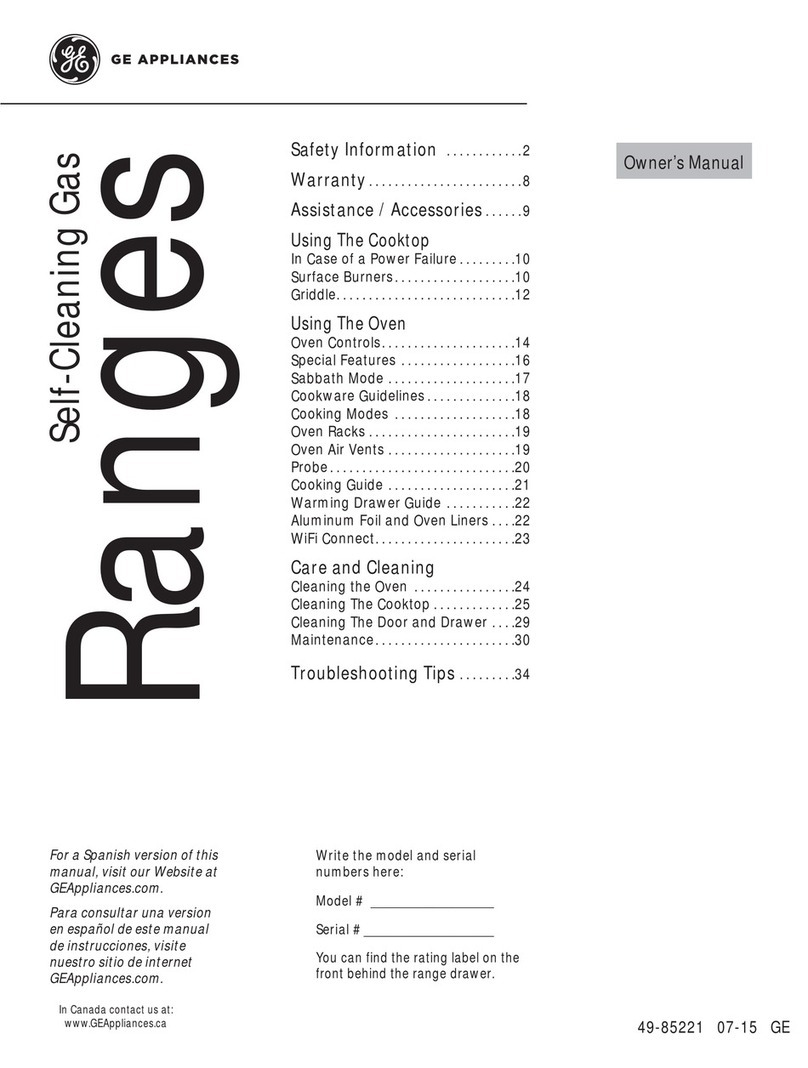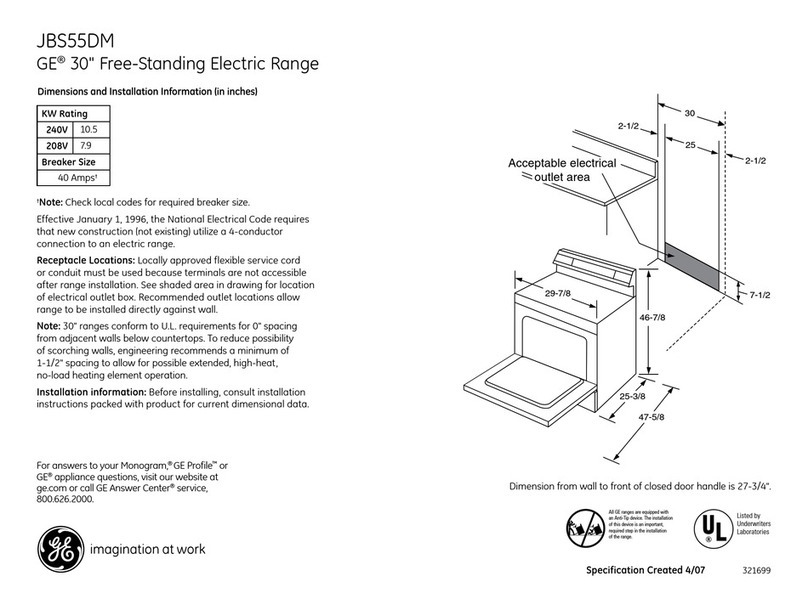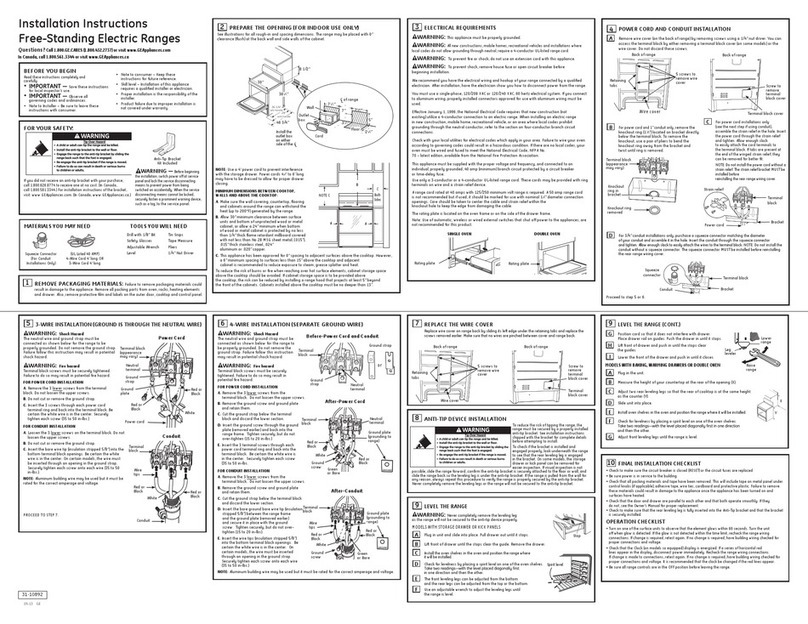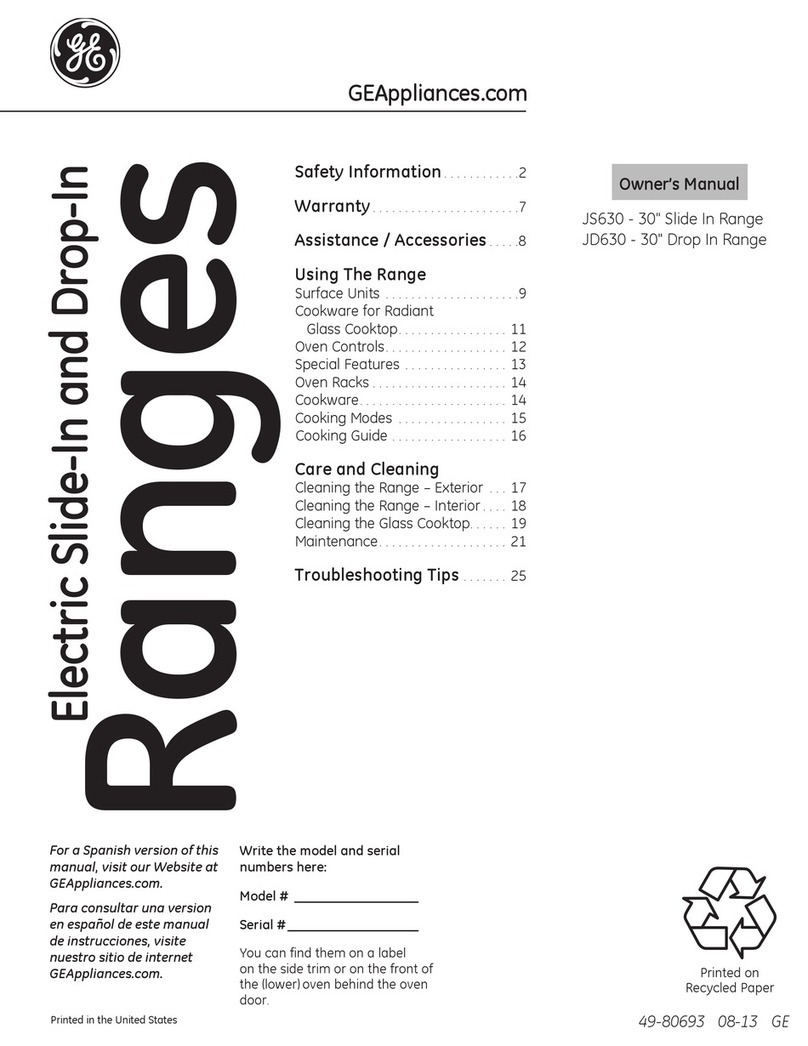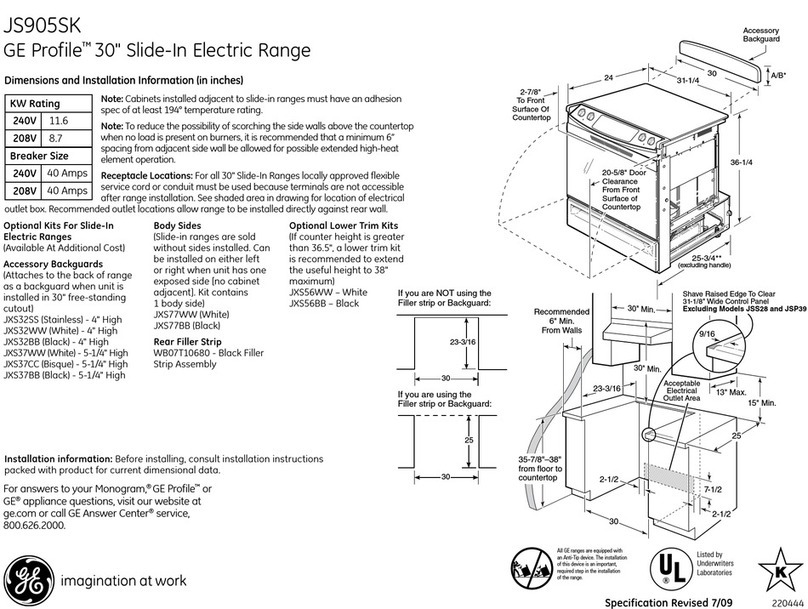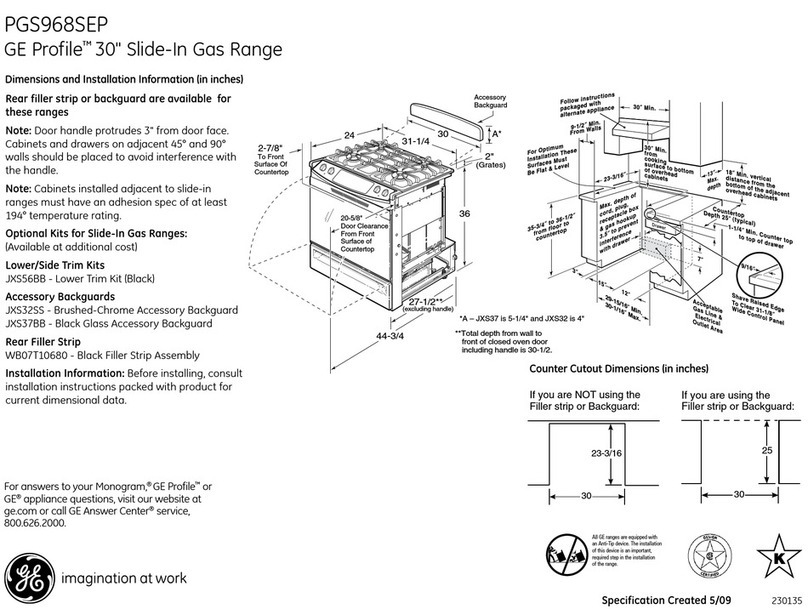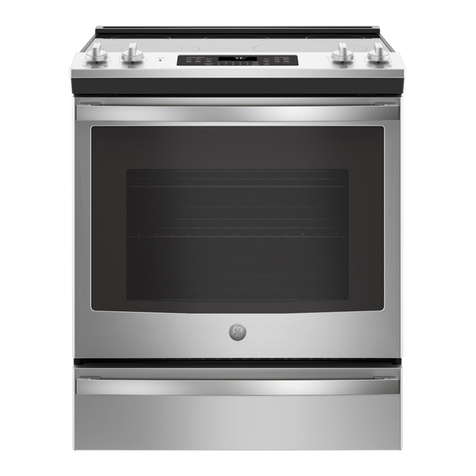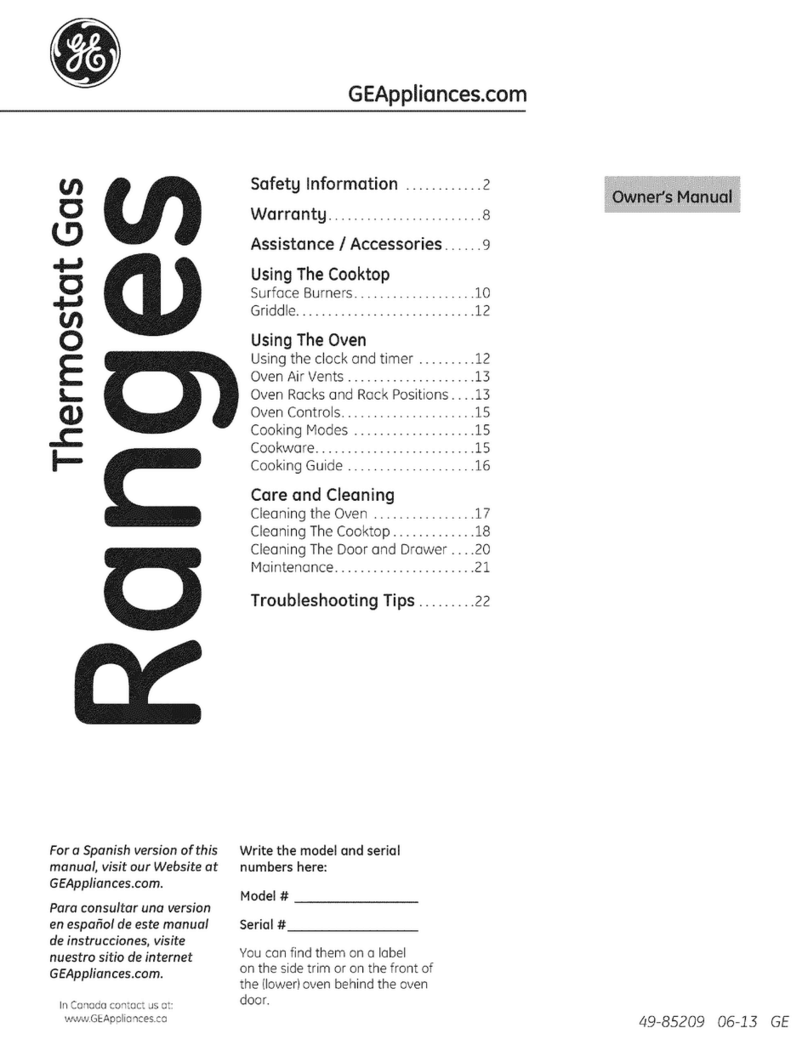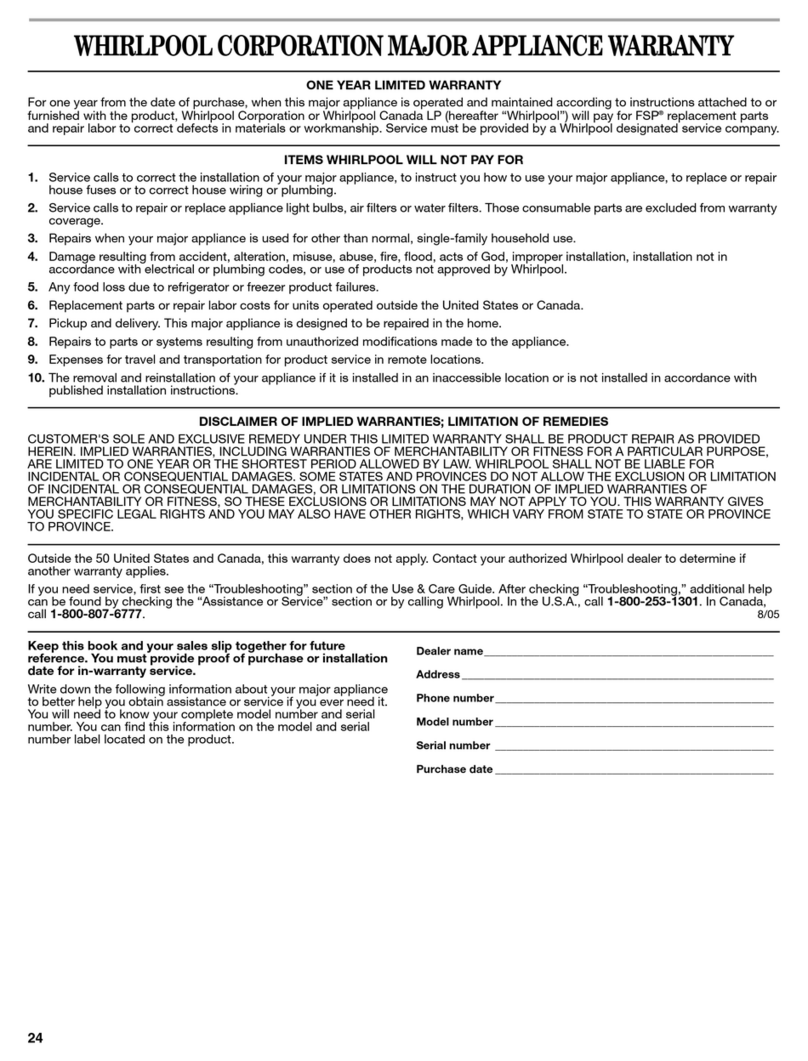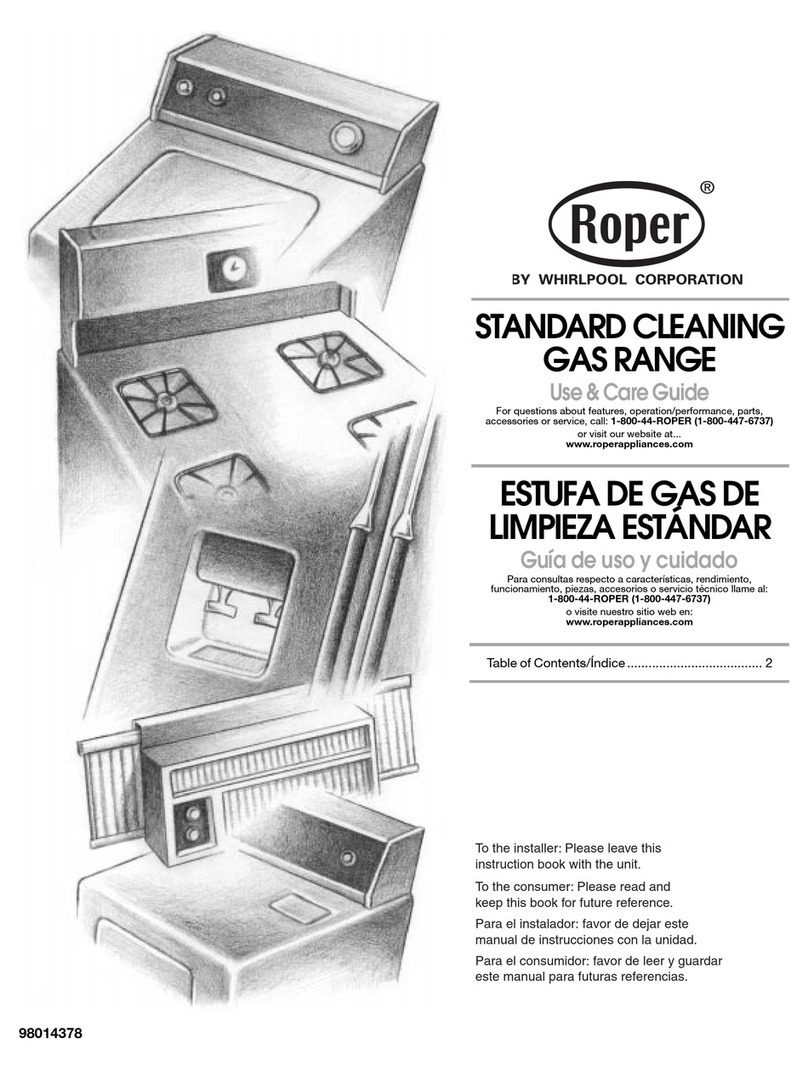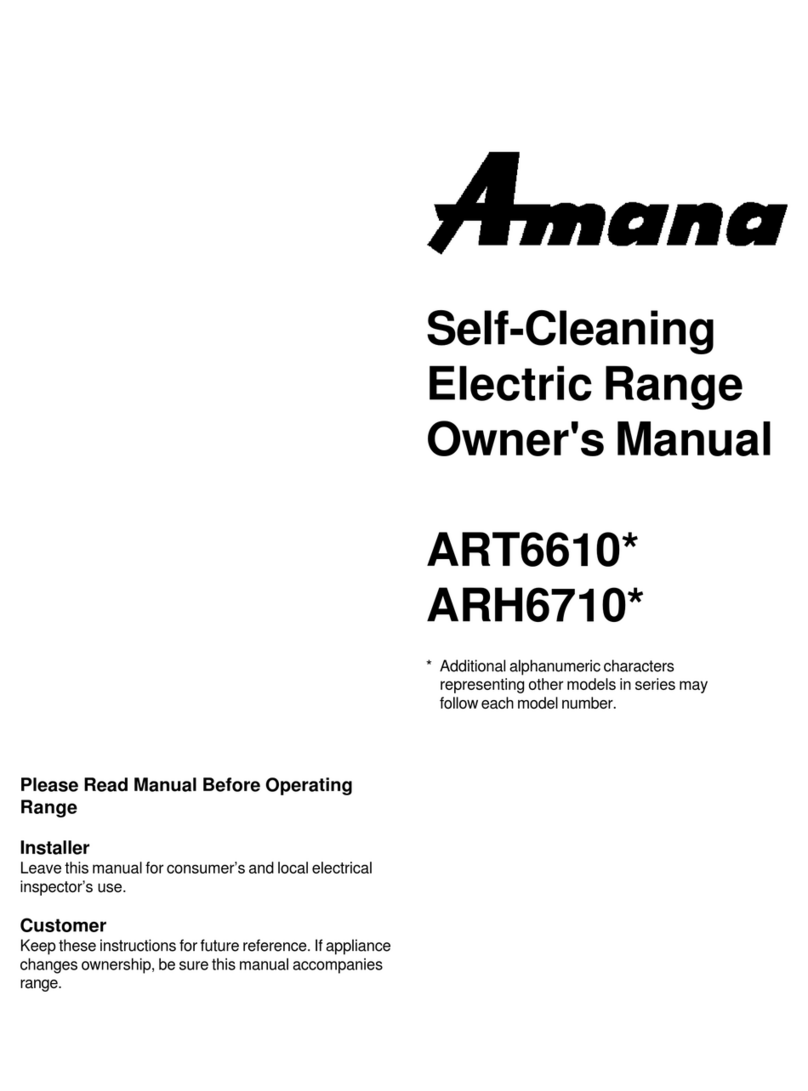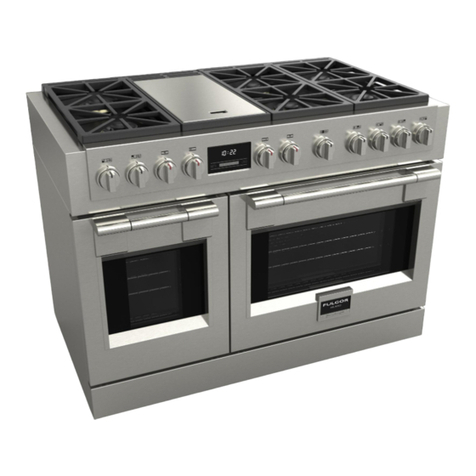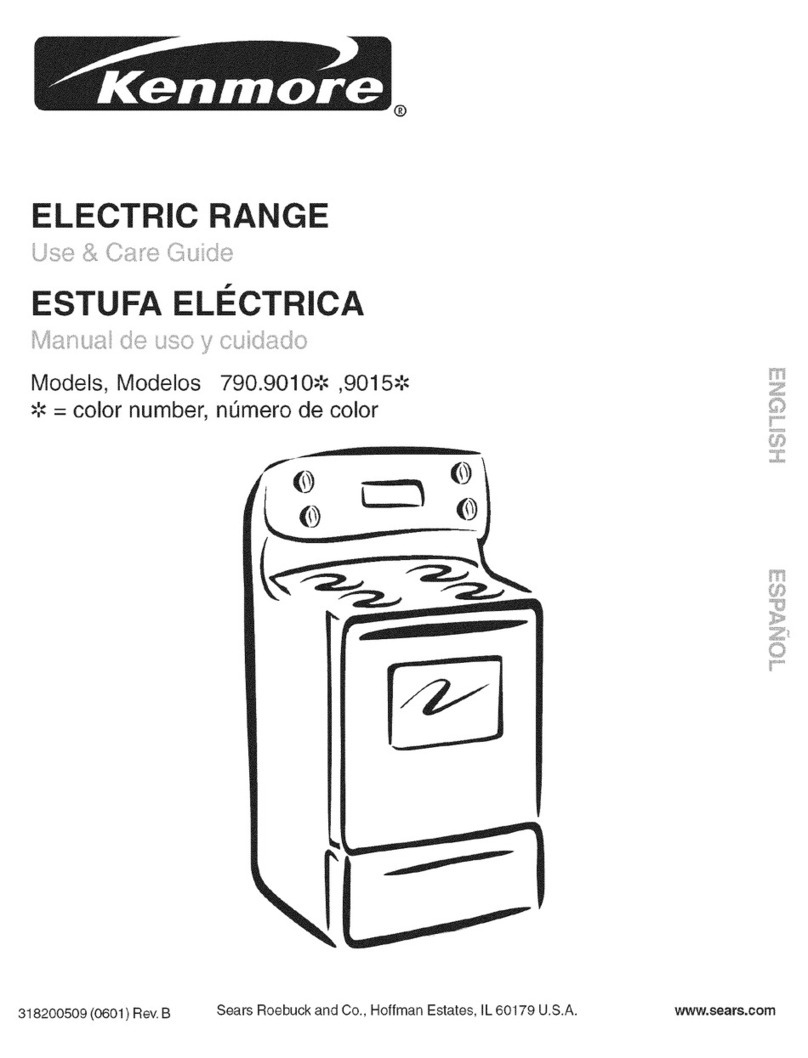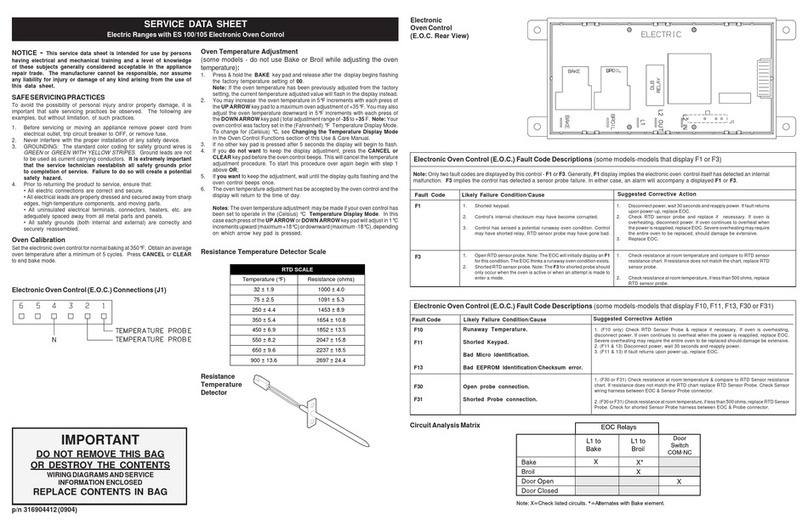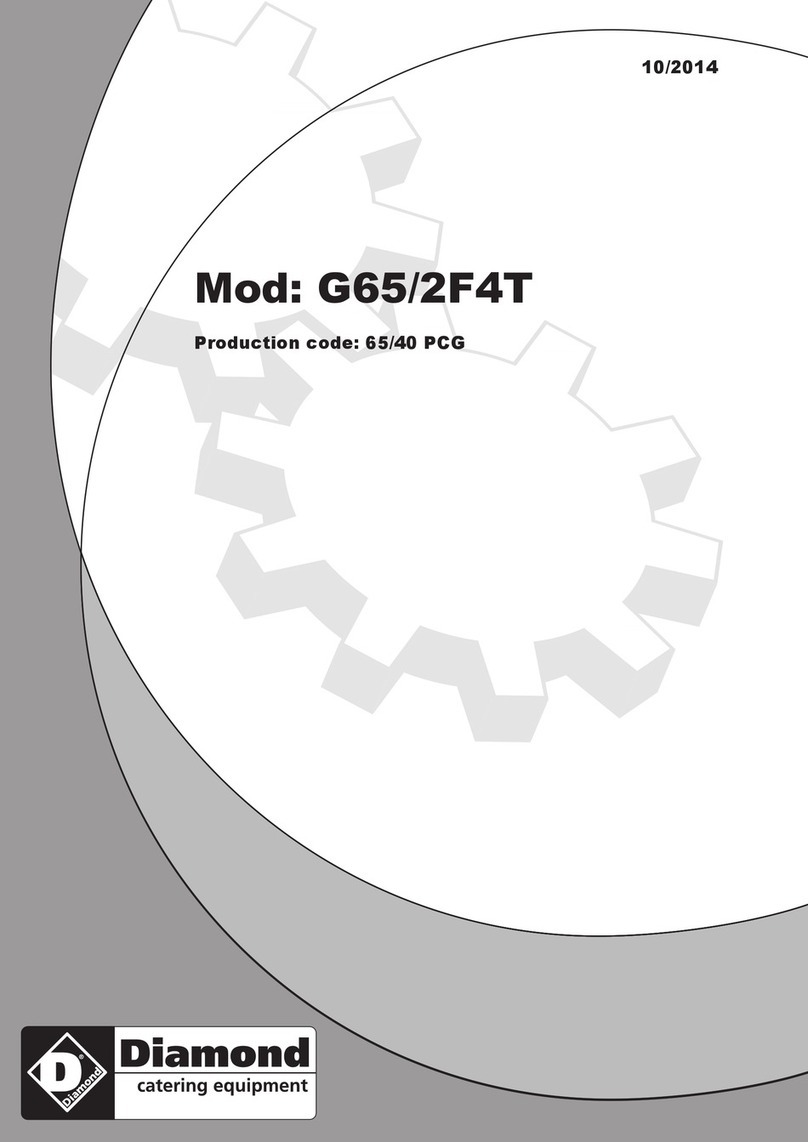
GEAppliances.com
j WARNING i GENERAL SAFETYINSTRUCTIONS
Usethis appliancefor its intendedpurposeasdescribedinthis
Owner'sManual.
Besureyour applianceisproperlyinstalledand grounded bya
qualifiedinstallerin accordancewith theprovidedinstallation
instructions.
Donot attempt to repairor replaceany partofyour range unless
it isspecificallyrecommendedin this manual.Allother servicing
shouldbetransferredto a qualifiedtechnician.
Beforeperformingany service,unplug therange or disconnect
the powersupplyatthe householddistributionpanelby removing
thefuse or switchingoff the circuitbreaker.
Donot leavechildrenalone-children shouldnot beleft alone
or unattended inan area wherean applianceisin use.They
shouldneverbe allowedto climb,sitor stand on any partof the
appliance.
CAUTION :Donotstoreitemsofinteresttochildren
abovea range or onthe backguardof a range-children climbing
on the rangeto reachitemscouldbeseriouslyinjured.
Useonlydry pot holders-moist ordamp pot holderson hot
surfacesmay resultin burnsfrom steam.Donotlet pot holders
touch hot surfaceunitsor heatingelements.Donotusea towel
or other bulkycloth in placeof pot holders.
Neveruseyourapplianceforwarming or heatingthe room.
Donottouch the surfaceunits,the heatingelementsor the
interiorsurfaceof theoven.Thesesurfacesmay be hotenough
to burn eventhough they aredark in color.Duringand after use,
do not touch,or letclothingor otherflammable materialscontact
the surfaceunits,areasnearbythe surfaceunitsor any interior
area ofthe oven;allowsufficienttime forcoolingfirst.Other
surfacesof theappliancemay becomehot enoughto cause
burns.Potentiallyhot surfacesincludethe cooktop,areasfacing
thecooktop,ovenvent opening,surfacesnearthe openingand
crevicesaround theovendoor.
Donot heatunopenedfoodcontainers.Pressurecouldbuild up
and thecontainer couldburst,causingan injury.
Donot usealuminum foilto linethe drip pansor anywhere inthe
oven,exceptasdescribedin this manual.Misusecouldresultin
damageto the rangeand shockor fire hazard.
Avoidscratchingor impactingglassdoors,cooktopsor control
panels.Doingsomay leadto glassbreakage.Donot cookon a
product with brokenglass.Shock,fireor cuts mayoccur.
iii_Cookmeatand poultrythoroughly-meat to at leastan internal
temperatureof Z60°Fandpoultry to at leastan internal
temperatureof Z80°F.Cookingto thesetemperaturesusually
protectsagainst foodborneillness.
jA WARNING j KEEPFLAIVllVlABLEMATERIALSAWAY FROM
THE RANGE.
iii_,Donotstoreor useflammablematerialsin an ovenor near
the cooktop,includingpaper,plastic,potholders,linens,wall
coverings,curtains,drapesand gasolineor otherflammable
vaporsand liquids.
iii_,Neverwear loose-fittingor hanginggarmentswhileusing
the appliance.Thesegarments may igniteifthey contact hot
surfaces,causingsevereburns.
iii_,Donotletcookinggreaseor otherflammablematerials
accumulate in or nearthe range.Greaseinthe ovenor onthe
cooktop may ignite.
iii_,Cleanventilatinghoodsfrequently.Greaseshouldnot be allowed
to accumulate onthe hood or filter.
iA i
In WARNING 1IN THEEVENTOFA FIRE,TAKETHEFOLLOWINGSTEPS
TOPREVENTTHE FIREFROM SPREADING:
iii_,Donot usewater on greasefires.Neverpick up a flaming pan.
Turnthe controlsoff.Smothera flaming pan on a surfaceunitby
coveringthe pancompletelywith awell-fitting lid,cookiesheet
or flat tray.Usea multi-purposedry chemicalor foam-type fire
extinguisher.
iii_Ifthere isa fire inthe ovenduring baking,smotherthefire by
closingthe ovendoor and turning theovenoff or byusinga
multi-purposedrychemicalor foam-type fireextinguisher.
iii_Ifthere isa fire inthe ovenduringself-clean,turn theoven
off andwait for thefireto go out. Donotforce thedoor open.
Introductionoffresh air at self-cleantemperatures may leadto
a burstof flame from the oven.Failureto follow this instruction
may resultin severeburns.
]
